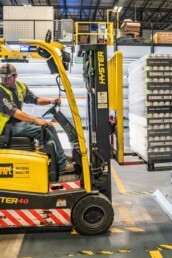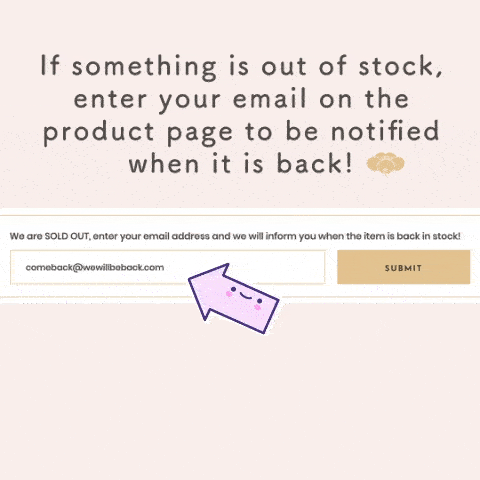Switching 3PL Provider Considerations for a Seamless Transition
Switching 3PL Provider Considerations: Essential Steps for a Seamless Transition
Businesses relying on third-party logistics (3PL) providers often consider a shift to enhance their operations. The benefits of outsourcing fulfillment are undeniable, but choosing the ideal provider requires careful consideration. Here’s a comprehensive guide to assist in this pivotal decision process. To start, make a list of must-have services based on current and projected volume. Additionally, research a range of potential partners with proven expertise in warehousing, packaging, and shipping orders on time. Then, compare rates and service levels to find the best value aligned with your budget and growth strategies. Finally, vet each 3PL’s reliability and on-time delivery records over several years. Above all, choose a provider that offers flexibility to scale up or down as market conditions change.
Evaluate Your Current Provider

Firstly, assessing your existing 3PL’s performance is the initial step. Consequently, scrutinize their service quality, cost, and reliability against your business requirements. Here are some questions that aid in judging their efficiency:
- Meeting accuracy and on-time delivery expectations?
- Do fulfillment services align with business needs?
- Does the fee structures match industry standards?
- Transparent reporting for inventory and order tracking?
- Handling returns and refunds efficiently?
- Rating communication levels on a scale of 1-10?
- Scalability potential aligned with future plans?
Research Potential Providers
Identifying prospective providers initiates the research phase. Subsequently, explore reviews, testimonials, and comparison studies. Thereafter, a useful starting point could be WarehousingAndFulfillment.com, linking you with over 500 pre-vetted 3PL companies.

Consider Your Customers’ Needs
Prioritize your customers’ experience by giving paramount importance to their needs when considering a new provider. For example, envision various enhancements, including quicker order deliveries, diverse delivery choices, enhanced packaging, and supply chain solutions. Additionally, it’s crucial to address prevalent customer pain points such as stockouts, slow deliveries, tracking issues, return difficulties, damaged goods, and inventory discrepancies.
Ask Questions

Switching 3PL providers requires engaging with potential providers with pertinent inquiries. Here’s a set of questions to help in your decision-making process:
- What is their expertise in omnichannel fulfillment and technology integration?
- What warehouse automation strategies do they implement?
- How do they utilize streamlined operational technologies?
- What procedures do they follow for vendor receiving and inventory management?
- What protocols are in place for lost inventory or incorrect orders?
- How are their fee structures and service inclusions designed?
- What are their specializations in product types?
- Do they have minimum monthly order volume requirements?
- Is same-day order processing feasible?
- What accuracy guarantees do they provide?
Switching your 3PL fulfillment provider requires thorough consideration to ensure optimal service for your business. Particularly given that each provider varies significantly, this necessitates making an informed decision based on current evaluation, meticulous research, and customer-centric approaches. Ultimately, aligning with the right 3PL provider holds the potential to not only enhance operations but also elevate customer experiences significantly.
Beginner’s Guide to Third-Party Logistics (3PL)
The world of e-commerce is always changing, understanding the roll of Third-Party Logistics is integral to keeping up. This beginner’s guide to third-party logistics (3PL) will delve into the essential aspects, offering insights into fulfillment services, warehousing, and much more.
Read More…
Falcon Fulfillment excels in logistics, supply chain management, and e-commerce fulfillment. Moreover, by collaborating with various industries, our dedicated account managers ensure seamless communication. Therefore, partner with us for a mutually beneficial relationship.
Discover how Falcon can elevate your fulfillment standards. Contact our team today.
Let’s Talk!
E-commerce Return Management: How to Avoid Returns Altogether
Let us be the first to say: HAPPY RETURN SEASON!
Ok, we get it. We know it’s not happy and you’re hoping it ends soon. Thankfully, we’re here to teach you how to improve your overall e-commerce return management so you don’t have to start off your new year with return-season sadness.
What is E-commerce Return Management?
E-commerce return management is the small but ever-so-important area of business that manages the overall return process for your e-commerce company. Whether you have great or poor return management, utilizing new tools to improve your processes will reduce your carbon footprint, improve the shopping experience for customers and increase overall customer retention and satisfaction.
E-commerce Return Season
With us only days into the new year, return season has inevitably come along with 2022. Although we see a rough 30% of customers returning items within the first month of the post-holiday season, that number is increasing thanks to the 2020 pandemic.
As we enter return season with a thought-out strategy and incredible patience, it’s important to note that between 5% and 15% of all items customers ordered last year will be returned to stores. This makes up roughly 10% of all holiday sales made in 2021.
Not to mention, 9%-10% of your overall returns are estimated to be fraudulent.

How Covid-19 Impacted Returns
How did the pandemic affect return rates exactly? Well, according to the market research group Mintel, it found that 38% of all UK online shoppers said that the Covid-19 outbreak “had made them more confident in returning online purchases”.
This means that consumers are more comfortable buying, trying, and returning products than ever before.
According to research from Digital Commerce 360, retailers saw a 41% increase in 2021 returns compared to the 2020 holiday season.
What does this mean for e-commerce companies moving forward? Returns aren’t going away, which is why it’s important to come up with a strategy to offer easy, hassle-free, and environmentally-friendly return opportunities to customers.
Let’s learn how.

The 3 Ways to Accept Returns
Mail Item(s) Back to Warehouse
Offering customers the option to return items to your warehouse is a no-brainer. Whether they want to exchange their order, receive store credit, or simply get a refund, it’s up to you to provide easy means of doing so and the quality customer support your buyers need to have a great shopping (and returning!) experience.
As a buyer, sending items back to a warehouse can be a hit or miss. If the pants your customer ordered are a bit too small, they send them back in hopes they will receive the correct size based on their first item, the second time around.
Providing accurate information about your items helps customers make the correct purchase the first time as well as improves returning experiences
To learn in what ways your e-commerce brand can provide a better shopping and returning experience, check out our 2022 eCommerce breakdown where we go over the secrets you’ll need to succeed.
Return in Store
Did you know that 62% of shoppers are more likely to shop online if they can return their purchase to a physical store? Unlike returning to a warehouse, local storefronts allow customers to avoid waiting periods and return items in-store.
This cuts out waiting times, shipping carriers, and allows customers with the opportunity to exchange items in person, almost guaranteeing they’re buying an item exactly how they want it.
Allowing customers to return items in-store also motivates in-store shopping experiences. Although this digital age is fun, entertaining, and sometimes mind-bending, nothing beats that good ole’ fashioned feeling of entering a store, being greeted by staff, and losing yourself amongst physical products.
Don’t underestimate the power your physical store-front can bring your company, even if customers are returning items.
Partner with a 3PL for E-commerce Return Management
Utilizing a middleman not only changes the e-commerce game but also takes the stress out of return management.
Partnering with a 3PL allows your customers to return any and all items back to your partnered 3PL warehouse without any effort on your part. When working with the right 3PL, they will have teams designated to help customers return items, exchange items, and answer any questions or concerns they might have.
What’s not to love about a fulfillment process that does the heavy lifting for you?

Steps to Successful E-commerce Return Management
Improve Return Policy
Improving your return policy is the first step when improving your overall e-commerce return management process. By following these simple steps, you’ll have an easy-to-follow return policy for your customers in no time.
Make your return policy easy to find
Making your return policy prominent for customers is key. Using eye-catching colors, moving banners, pop-ups, or large, easy-to-read fonts will help your buyers locate, read, and understand your return policy before making a purchase and blindly returning items.
Don’t make it too formal
Remember, you’re talking to your customers. Not lawyers, doctors, or big wig business owners (if in the case you do, disregard #2 altogether), but regular customers who want regular verbiage.
Explain your return policy in a simple and easy-to-read format with easy-to-understand language.
Be upfront about shipping costs and define the expected condition of returns
Nobody likes surprise fees – make sure you clearly identify return shipping costs (if any) in your return policy. Additionally, predetermining what conditions your return policy covers – is equally as important.
Outlining what is and isn’t returnable, makes it clear for customers what they can return, when, and in what condition.
Use customer feedback
Don’t create a return policy and cement it into the framework of your website. Instead, update it regularly with changes provided through customer feedback.
Allowing buyers to let you know what they do and do not like, will give you the chance to become better and offer an even better shopping experience moving forward.

Automate Return Management
Switching to an automated system for returns and exchanges could save you time, stress, and money. Utilizing an automated option will allow your customers to skip the long customer service line and ditch waiting periods altogether.
With automation, buyers can return and exchange at the click of a button with little to no help on your part.
Learn more about how automation is making its mark on e-commerce and in what ways you can utilize it for 2022 in our upcoming e-commerce trends article.
Sustainable Returns
Customers want sustainability – and they want it now. Not just with their initial purchase, from material to packaging to delivery, but with returns too.
Did you know that around 5 billion pounds of returned goods wind up in landfills annually? According to MarketWatch, that’s nearly 5 million metric tons of CO2. Every. Single. Year. So, how do you offer sustainable returns? Here is a shortlist of things you can do right now.
Consolidate orders
There’s no reason multiple items in one order should be shipped in separate packaging. Combine orders together to eliminate wasted space and unnecessary packaging materials.
Eliminate unnecessary filler and empty space
Aside from consolidating orders, eliminating unneeded package filler and unused space is a great way to lower your company’s carbon footprint.
Reward customers for choosing greener shipping options
We know customers like their deliveries fast, but, do they like eco-friendly delivery more? Motivate and reward your customers when they choose longer delivery times or utilize BOPIS options.
“Opting for standard delivery rather than next-day could help decrease carbon dioxide emissions by about 30%.”
According to the MIT Center for Transportation and Logistics
If you’d like to learn more about sustainable packaging and how you can start your transition to a greener environmental impact, check out our eco-friendly packaging guide.

Protect Against Fraud
You know it, we know it, and your customers know it – the season of fraudulent returns is upon us. Even if you read this in July, chances are that fraudulent returns are still an issue you’d like to snuff out. Here is a short list of ways you can protect your company against return fraud this return season and forever after.
Modify for the holidays
A return policy is not a one-size-fits-all type of thing. When the holidays come around or even a special sale, it’s important to update your return policy with relevant information and communicate it with your customers.
Receipts
It’s fairly simple – don’t accept returns without a valid receipt. Include this in your return policy.
Tagging items
An up-and-coming idea that will inevitably gain more and more traction is the use of return security tags for items. Using items like a 360 ID tag will make it harder for customers to wear their purchase for an occasion and send it back immediately afterward.
By introducing return tags, buyers can try on their purchases, but once the tag is broken – it can not be returned. Tagging items will also help verify that the items you receive as a return, is in fact the same item you originally sent out.
Restocking fees
I prime way to deter people from buying that brand new TV for game day and returning it a day later, is to introduce restocking fees for high-cost items. By utilizing a restocking fee, potential scammers won’t receive any benefit for returning items and instead will lose money.

Steps to Avoiding Returns
The best kind of e-commerce return management is when you don’t have any returns to manage. Avoiding returns will not only create a better customer experience, but will also decrease stress on your customer service team, improve customer ratings and recommendations, and decrease your overall carbon footprint.
Let’s get into some ways you can avoid returns altogether.
Include Clear and Easy to Find Product Information
You’d be surprised with the kind of details customers need in order to be satisfied with their product. When writing item descriptions, include every detail you possibly can.
How large is it, how much does it weigh, what color is it, how can it range between customers, etc. Providing as much information as possible will help your customers receive exactly what they expected, eliminating their need for a return.
Use 3D or AR Website Functions
Another up-and-coming trend is the use of 3D or AR website functions. These elements allow customers to see what an item will look like in their home, on themselves, or what it would look like in person.
This creates yet another safety net by giving your customer a full view of what to expect out of their item, reducing the overall return rate for dissatisfaction.
Provide Accurate Photos and Videos
Nobody likes receiving a product that looks incredibly different online than in-person.
- Editing your products to look better online will make them look worse in person.
- Using extra props for product photography will make customers assume their order will include extra items.
- Using colors and lighting to drastically alter your product will make the product look different in person.
Long story short: capture your product in the exact way your customers will receive it.
Encourage Customer Reviews and Feedback
Reviews and feedback are now one of the leading factors to whether or not a buyer will make the purchase. Encourage your customers to leave reviews and feedback on items and overall experience to help land more sales and increase the overall reputation of your brand.
Packaging Items with Travel in Mind
The truth is, some 30% of items are returned because they arrived to the customer faulty or damaged. By eliminating unnecessary space, you improve the chances of items arriving undamaged.
However, packaging items with the understanding that they will be traveling inside trucks, planes, ships, and be at the mercy of package handlers – you must prepare for the worst.
Keeping items packaged tight will decrease the chances of moving around, bumping into each other, or any other opportunity for damage.
The Impact of Shipping and Delivery on E-commerce Satisfaction
In the evolving world of e-commerce, customer satisfaction hinges not only on product quality and price but also on the efficiency and reliability of shipping and delivery services. Understanding the significance of these factors is crucial in enticing potential e-commerce leads. In this blog, we delve into the key takeaways from a recent survey regarding shipping and delivery experiences, and how these findings can shape your approach to enticing e-commerce businesses.
Returning with Falcon
We know you’re reading this with a bead of sweat running down your forehead. There’s so much information, return fraud is on the rise, the planet is dying, and now you have to worry about re-writing an exceptional return policy, amidst the thousands of other things you’re already worrying about.
We’ve got just the thing for you. Partner with Falcon and ditch the stress of returns, fulfillment (and even customer service) altogether – it really is that simple.
Contact us today and get started on your de-stressing.
Let’s Talk!
Managing Expectations This Holiday Season
The Shipper’s Guide to Managing Expectations This Holiday Season
The holiday season is the most wonderful time of the year – but also the most stressful for many e-commerce businesses. With heightened consumer demand comes pressure to meet and exceed customer expectations for product availability, shipping speeds, and service. Therefore, this holiday season, focusing on inventory and delivery management will be key to managing customer expectations and minimizing issues. In particular, optimizing inventory levels and Implementing efficient fulfillment processes are essential. Additionally, providing transparency around order status through tracking information and proactive customer communication creates a positive customer experience. Ultimately, e-commerce brands that invest in strong operations this holiday season will be rewarded with satisfied, loyal customers and positioned for future success.

Inventory Management is Crucial
With many consumers still relying heavily on e-commerce, even the largest retailers can struggle to keep popular products in stock. To avoid disappointing customers with out-of-stocks:
- Invest in inventory management software with demand forecasting capabilities. This will help you predict spikes in demand for top-selling items based on past sales data, search trends, and other factors.
- Build safety stock levels to account for heightened demand. Don’t just rely on past sales – increase stock of your top SKUs by at least 20%.
- Streamline supply chain management and implement solutions like Vendor-Managed Inventory (VMI) for key vendors. This gives you visibility into their stock levels and production capacity ahead of the season.
- Scale up workforce for receiving, storage and order fulfillment with temporary or outsourced Warehouse and Distribution staffing. This will prevent bottlenecks as order volume increases.
Optimizing Delivery is Key
Consumers have come to expect ultra-fast, free shipping across all online purchases. To meet delivery demands:
- Negotiate discounted shipping rates with carriers through annual contracts and volume discounts. This will help offset surcharges and keep free shipping profitable.
- Invest in Transportation Management System (TMS) routing software to map optimal delivery routes and consolidate shipments. This reduces mileage and transit times.
- Offer premium last-mile delivery services through same-day or next-day carriers in key regions. Though costly, this caters to customer convenience and impulse purchases.
- Set reasonable lead times on website, with caveats around potential weather or demand-related delays. Under-promise and over-deliver to exceed expectations.

Keep Customers Updated
The best way to manage expectations is through transparency. Leverage these tools:
- Implementation of Order Tracking software gives shipment status updates directly to customers. This reduces inbound inquiries on delivery ETA.
- Utilize email and text capabilities in Warehouse Management System (WMS) to proactively notify customers of any order changes, delays or shortages.
- Empower customer service team to instantly access inventory counts, order status and delivery details to quickly resolve issues.
- Send personalized email notifications to re-engage customers if items become back-in-stock or to suggest alternative gift ideas for out-of-stocks.
By optimizing inventory availability, implementing delivery solutions and improving transparency, e-commerce businesses can better manage the pressures of peak demand. Follow these fulfillment and technology strategies for your most seamless holiday season yet. Delighted customers and positive reviews will set your brand up for success in the new year ahead.
Additional Inventory Management Tips
As mentioned, keeping popular products well-stocked is crucial during peak demand. A few additional inventory management tips include:
- Implement perpetual inventory methods with cycle counts every 1-2 weeks leading up to the holidays. This identifies discrepancies between system records and physical counts early for correction.
- Segment inventory by velocity (fast, medium and slow-movers) to prioritize availability of top-selling SKUs. These A-class inventory items drive the majority of holiday revenue.
- Utilize an Inventory Tracking software or WMS to reduce rate of misplaced items within the warehouse. This provides real-time visibility by assigning unique IDs to each SKU for easy location.
- Test unmanned solutions such as autonomous mobile robots and automated storage and retrieval systems to handle more supply without expanding workforce. This speeds up fulfillment even during labor shortages.
Demand Forecasting and Safety Stock Levels
Getting inventory demand forecasts wrong during the unpredictable holiday season can be detrimental. Avoid stockouts by:
- Working with vendors and suppliers early to confirm production windows and raw material availability for top inventory. Confirm they have labor to scale production if needed.
- Evaluating trends from prior holiday seasons, including major retail events like Cyber Week and Green Monday, to estimate sales velocities by product category.
- Building in flexibility to pivot staffing and inventory allocation based on intra-season demand fluctuations.
- Budgeting for excess buffer stock to account for forecast error – this is especially important for imported or long-lead-time items.
Enhancing Last-Mile Delivery
As mentioned in the original post, upgrading last-mile delivery capabilities is no longer a “nice-to-have” but requirement for modern consumers. Things to consider:
- Explore crowdsourced same-day delivery options to offset rising rates from traditional couriers during peak season.
- Provide customers visibility into all available delivery options and associated costs at checkout. This avoids later frustration if buyers feel misled by marketing promises.
Beginner’s Guide to Third-Party Logistics (3PL)
The world of e-commerce is always changing, understanding the roll of Third-Party Logistics is integral to keeping up. This beginner’s guide to third-party logistics (3PL) will delve into the essential aspects, offering insights into fulfillment services, warehousing, and much more.
Read More…
Managing customer expectations may feel daunting, but taking strategic steps to optimize inventory, delivery, and transparency this holiday season will pay off hugely. For example, companies who focus on improving fulfillment position themselves well for long-term growth and loyalty. In particular, utilize the inventory management tactics, last-mile delivery solutions and order tracking capabilities outlined above as investments towards future success. Furthermore, most importantly, remember that the holidays ignite magic and joy for customers amidst the stress. Therefore, find ways big and small to positively surprise them while managing operations behind the scenes – this might include sending a small free gift with purchases or offering seasonal discounts on future orders. Ultimately, by focusing on fulfillment optimization and customer delight, companies can set themselves up for retention and growth in the years ahead.
Companies who can balance profit and delight this holiday season will earn customer satisfaction, invaluable word-of-mouth, and sales long after the seasonal rush ends.
Let’s Talk!
Why Taking a Year-End Physical Inventory Count Matters
Why Taking a Year-End Physical Inventory Count Matters
Taking a physical inventory count is an essential process for any business that holds stock, raw materials, or finished goods. Whether you manage a large fulfillment center or a small retail store, counting your physical products regularly is key to the accuracy of your inventory records, detecting potential inventory discrepancies, and even calculating your tax obligations properly. Read on for a comprehensive overview of what a physical inventory entails, why a year-end count is so vital for any business, and how you can streamline the process for maximum efficiency.

What Does Taking Physical Inventory Involve?
Physical inventory refers to the process of manually counting, weighing, or otherwise quantifying every item currently held in your warehouse, fulfillment center, retail location, or other facilities. This provides you with extremely accurate data on your stock levels, allowing you to compare the real-world figures to your existing inventory management records.
For businesses that handle a lot of products, counting inventory can be a massive undertaking potentially involving closure of facilities so that counts can be conducted without interference from regular operations. An inventory count should document details like:
- Product SKUs
- Exact quantities on hand for each item
- Locations of various products
- Any damages, defects, or quality issues noticed
Once counting is complete, you can compare the results to your expected stock levels based on purchasing and sales records. This reveals any inventory errors like theft, damages, or database inaccuracies so they can be addressed.
Why Year-End Inventory Counts Are Critical
While regular cycle counts are important for inventory accuracy, a comprehensive physical inventory at year-end provides unique benefits that support sound financial practices and operational efficiency.
Calculating Cost of Goods Sold: For tax purposes, you must determine your business’s cost of goods sold (COGS) annually to ascertain net income or loss. Since the value of your year-end inventory directly impacts this key calculation, an accurate count is essential.
Detecting Shrinkage Issues: A yearly physical inventory review makes shrinkage stand out clearly. If your actual stock doesn’t align with projections, it allows you to pinpoint problems like damages, miscounts, theft, or other causes of loss so you can implement preventative processes. This protects profits.
Informing Better Decisions: An accurate inventory overview enables data-backed decisions about purchasing, storage needs, staffing, loss prevention, and more as you enter a new financial year. This leads to supply chain optimization.
Planning Sales or Cycles: For businesses with annual sales cycles, a physical inventory check allows you to verify that you have adequate quantities on hand to meet customer demand without tying up excess capital unnecessarily.

The Importance of Inventory Accuracy
An accurate inventory count is crucial for several reasons beyond calculating taxes and detecting shrinkage. A few key benefits include:
Improved Customer Service Levels: When you have reliable visibility into actual product availability, you can confidently make sales promises and meet customer delivery expectations. Overselling stock leading to backorders or stockouts erodes trust.
Better Demand Forecasting: With concrete data on true stock positions, your demand planners can create superior projections for future inventory needs. This allows you to align purchasing and production with expected sales more precisely.
Increased Operational Efficiency: When inventory data aligns with reality, warehouse workers can optimize picking paths, ensure adequate storage space, and improve product slotting to boost productivity. Confidence in inventory accuracy leads to process improvements.
Funding Core Business Functions: For some businesses, inventory itself acts as collateral that allows increased borrowing capacity from lenders. Thus, verified quantities can facilitate access to working capital necessary for growth.
Mitigating Supply Chain Risk: From unexpected demand spikes to overseas shipping delays, supply chain disruptions remain commonplace. However accurate inventory counts help quantify your existing buffer so contingency plans reflect your true ability to absorb volatility.
Streamlining Year-End Inventory Processes
Careful preparation and management are key to making huge inventory counts efficient. Here are some top tips for streamlining your year-end physical inventory process:
Schedule Strategically: Choose a slower sales period so you can minimize business disruptions. Often January provides a perfect window between holidays and the new year rush.
Classify Products: Sort items based on sales velocity (ABC classification) so prioritization decisions are streamlined.
Enlist Help: Depending on inventory size, you may need additional staff or 3PL assistance. Provide training to anyone assisting with the count.
Map Out Locations: Create detailed maps showing all inventory locations to simplify searching and ensure comprehensive counts. Distribute to all counters.
Organize Inventory: Straighten shelves and storage areas so nothing gets missed. Group like products together.
Support Counters: Ensure teams have needed equipment like scanners for efficiency. Provide packing materials like boxes or crates to hold counted items.
Track Progress: Use checklist templates, maps, or warehouse management software to mark sections once counting in specific areas concludes.
Perform Cycle Counts: Supplement a major physical count with more frequent cycle counts of especially valuable stock or fast-moving products.
Year-end Physical Inventory Count Accuracy Best Practices
Alongside periodic cycle counting and annual physical inventory reviews, you can employ several ongoing best practices to sustain inventory accuracy:
Invest in WMS Solutions: Advanced warehouse management systems with real-time tracking preserve visibility as products move through fulfillment workflows. This forms a perpetual inventory management backbone.
Incorporate Scanning: Leverage barcode and RFID scanning at all critical inventory handling points like receiving, putaway, picking, and shipping. This instantly updates volumes in the WMS.
Perform Regular Audits: Even with strong inventory control technology, periodic hands-on spot checks verify that everything is capturing correctly at a granular level. Quickly address any inconsistencies.
Train Staff Thoroughly: Review standard operating procedures surrounding inventory transactions with warehouse personnel routinely to ensure systematic data capture and reinforce accountability at every turn.
Seek External Expertise: Work with experienced inventory management partners or consultants to gain an independent perspective on existing processes and tools while benefiting from industry best practices.
Rather than an annual inconvenience, view physical inventory counts as instrumental for unlocking transformative benefits, from supply chain resilience to data-driven growth, leading into the new year. Contact fulfillment experts for personalized guidance tailored to your operations.
Beginner’s Guide to Third-Party Logistics (3PL)
The world of e-commerce is always changing, understanding the roll of Third-Party Logistics is integral to keeping up. This beginner’s guide to third-party logistics (3PL) will delve into the essential aspects, offering insights into fulfillment services, warehousing, and much more.
Read More…
By following organizational best practices and leveraging helpful tools to add visibility, you can conduct thorough year-end physical inventory reviews without major disruptions. Accurate visibility into real-world stock positions allows you to make smart financial decisions while detecting potential problem areas for a healthier bottom line.
Reach out for personalized guidance on optimizing your unique inventory processes.
Let’s Talk!
Minimizing Lost and Stolen Packages: Secure Shipping with 3PL
Securing Your Shipping With A 3PL Solution Helps In Minimizing Lost and Stolen Packages.
In the world of e-commerce, the convenience of online shopping is coupled with the challenge of package security. Lost and stolen packages have become a recurring issue for both customers and businesses. Minimizing lost and stolen packages is an important part of fulfillment. Today we delve into effective strategies to minimize incidents while highlighting the advantages of partnering with a 3PL provider to mitigate these issues.

The Growing Concern of Lost and Stolen Packages
Package Security Matters
In an era where online shopping has become the norm, package security is paramount. E-commerce companies invest heavily in ensuring that their products reach customers intact. Unfortunately, the risk of lost or stolen packages is an ever-present concern.
Understanding the Impact
Lost or stolen packages not only result in financial losses but also damage a company’s reputation. Unhappy customers are less likely to return for future purchases. The logistics of tracking and replacing these packages can be a logistical nightmare.
A Solution: 3PL Providers
Falcon Fulfillment, a leading Third-Party Logistics (3PL) provider, understands the importance of secure package delivery. Their expertise in Fulfillment Services, Warehousing and Distribution, and E-commerce Fulfillment ensures a streamlined and secure supply chain.

How 3PL Enhances Package Security and Helps Minimizing Lost and Stolen Packages
Inventory Management
One of the key aspects of minimizing lost packages is efficient Inventory Management. Falcon Fulfillment utilizes state-of-the-art technology to track every item from the warehouse to the customer’s doorstep. This meticulous approach reduces the chances of items going missing and ensures order accuracy.
Shipping and Delivery
3PL providers like Falcon Fulfillment excel in Shipping and Delivery services, ensuring packages are handled with care and delivered promptly. Their focus on Supply Chain Management guarantees secure, on-time delivery. By consolidating shipments and optimizing routes, they minimize the risk of package loss during transit.
Last-Mile Delivery
The “last mile” is often the most vulnerable stage for packages. Falcon Fulfillment specializes in Last-Mile Delivery, optimizing the final leg of the journey and reducing the risk of package loss. Through advanced routing and tracking, they ensure packages reach their destination safely.
Safety and Security Measures in Warehousing
Falcon Fulfillment places a strong emphasis on Safety and Security Measures in Warehousing. Their fulfillment centers are equipped with advanced security systems, safeguarding your products until they reach their destination. This includes 24/7 surveillance, access control, and climate-controlled storage to protect your inventory.

Beyond Secure Shipping: Additional Benefits of 3PL
Apart from minimizing package loss, partnering with a 3PL provider like Falcon Fulfillment offers several other advantages for e-commerce businesses.
Scalable Fulfillment Solutions
3PL providers are equipped to handle the growth of your business. As your e-commerce business expands, Falcon Fulfillment offers Scalable Fulfillment Solutions, ensuring your operations can keep up with increasing demand. This scalability allows you to meet customer demands without compromising on security.
Inventory Tracking Software
Efficient Inventory Tracking Software is vital for the security of your products. Specifically, Falcon Fulfillment utilizes cutting-edge technology to provide real-time insights into your inventory, reducing the risk of discrepancies and losses. Furthermore, with the ability to track stock levels and receive alerts for low inventory, you can maintain control over your products.
Order Fulfillment Metrics and Reporting
Understanding how your orders are processed is essential for maintaining a secure supply chain. Accordingly, Falcon Fulfillment provides detailed Order Fulfillment Metrics and Reporting, giving you full visibility into your operations. Moreover, you can monitor the status of orders, track order accuracy, and identify areas for improvement, ensuring a secure and efficient fulfillment process.
Return Merchandise Authorization (RMA) Processing
Dealing with returns can be a complex process. Nevertheless, Falcon Fulfillment simplifies it with their Return Merchandise Authorization (RMA) Processing, ensuring that returned items are handled efficiently and securely. By streamlining the return process, you can reduce the risk of mishandled or lost return packages.
International Shipping and Import/Export Expertise
If your business operates on a global scale, Falcon Fulfillment’s International Shipping and Import/Export expertise can further enhance package security. They navigate the complexities of international shipping, customs clearance, and import/export regulations to ensure your products reach their destination without issues. Moreover, dealing with returns can be a complex process. However, Falcon Fulfillment simplifies it with their Return Merchandise Authorization (RMA) Processing, ensuring that returned items are handled efficiently and securely. By streamlining the return process, you can reduce the risk of mishandled or lost return packages.
Beginner’s Guide to Third-Party Logistics (3PL)
The world of e-commerce is always changing, understanding the roll of Third-Party Logistics is integral to keeping up. This beginner’s guide to third-party logistics (3PL) will delve into the essential aspects, offering insights into fulfillment services, warehousing, and much more.
Read More…
Minimizing lost and stolen packages is essential to the success and reputation of your business.
Falcon Fulfillment, with its expertise in 3PL services, offers comprehensive solutions for secure package delivery. From Inventory Management to Last-Mile Delivery, their services ensure your customers receive their orders intact and on time.
Partnering with Falcon Fulfillment not only enhances package security but also brings additional benefits like Scalable Fulfillment Solutions, Inventory Tracking Software, Order Fulfillment Metrics, efficient Return Merchandise Authorization Processing, and International Shipping and Import/Export expertise. These advantages make Falcon Fulfillment a reliable choice for e-commerce businesses looking to secure their supply chain and provide customers with a seamless shopping experience.
Investing in secure package delivery through a 3PL provider like Falcon Fulfillment is an investment in the future of your e-commerce business. So say goodbye to the worry of lost and stolen packages and hello to satisfied and loyal customers!
Let’s Talk!
Demand Forecasting in E-commerce
Everything You Need to Know About Demand Forecasting in E-commerce
Achieving seamless inventory management can feel like a mystical endeavor. Fortunately, you don’t need a crystal ball or a magical wand to master this craft. Instead, what you need is demand forecasting in e-commerce. In this comprehensive guide, we’ll delve into the intricacies of demand forecasting, exploring why it’s a crucial aspect of e-commerce success. Moreover, we’ll provide you with practical insights on how to implement it effectively within your organization. By the end of this guide, you’ll have a solid understanding of the power of demand forecasting and the tools necessary to harness its potential for your e-commerce business.

What is Demand Forecasting in E-commerce?
Demand forecasting in e-commerce is the art of using data to predict customer demand, thereby guiding pivotal decisions for your business. In essence, it’s like maintaining the delicate balance of an online store’s ecosystem. If you produce too much, you risk overstocking, which can lead to unnecessary costs and waste. On the other hand, if you produce too little, you’re faced with stockouts, resulting in lost sales and disappointed customers. To prevent these undesirable scenarios, you must turn to demand forecasting. By harnessing the power of data and employing the right techniques, you can navigate the complexities of inventory management and make informed decisions that drive your e-commerce success.
Why You Need Demand Forecasting
Demand forecasting offers an array of benefits for your e-commerce business. It helps you:
Optimize Inventory: Ensure you stock the right amount of products, avoiding excess or shortages.
Align with Operational Strategy: Make informed decisions for your business’s growth and efficiency.
Analyze Trends: Study demographic and product trends to stay ahead of the game.
Surprise and Delight: Exceed customer expectations with accurate product availability.
Risk Mitigation: Protect your business from financial uncertainties.
Peak Season Preparation: Get ready for the highs and lows of your industry.
Let’s explore the fundamentals of setting up a demand forecasting plan tailored to your e-commerce growth.
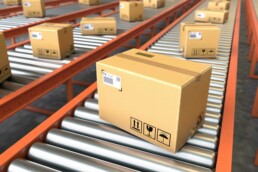
Guiding Questions for Demand Forecasting
Before diving into the techniques and methods, consider these key questions:
- What are your order patterns daily, monthly, and yearly?
- Have you noticed any fluctuations corresponding to specific time periods?
- Which products are your best-sellers, and which are slower-moving?
- How frequently does inventory need replenishing?
- What are your logistics costs compared to the Average Order Value (AOV)?
- Where are your customers located, and is your fulfillment center strategically positioned?
- Do you expect these projections to evolve over time?
These answers will be your compass as you embark on your demand forecasting journey.
Getting Started with Demand Forecasting Techniques
Demand forecasting, like a variety of ice cream flavors, offers several approaches to cater to your specific needs. Let’s explore the six types and methods.

6 Types of Demand Forecasting
- Passive Demand Forecasting: Uses historical sales data to predict future sales, although it assumes sales will remain the same year-over-year, which can be too simplistic for most e-commerce businesses.
- Active Demand Forecasting: Utilizes market research and external factors to provide a more comprehensive picture of future sales.
- Micro Demand Forecasting: Focuses on specific industries, businesses, or customer segments for in-depth analysis.
- Macro Demand Forecasting: Assesses global market shifts and economic conditions that could affect demand.
- Short-Term Demand Forecasting: Predicts for twelve months or less.
- Long-Term Demand Forecasting: Forecasts beyond one year.
6 Methods of Demand Forecasting
- Market Research: Gathers customer data through surveys, offering insights into your target audience.
- A/B Testing: Experiments with pricing, design, and product offerings to refine the customer experience.
- The Delphi Technique: Gathers expert opinions anonymously to form a market consensus.
- Sales Force Composite: Utilizes feedback from your sales team to identify trends and patterns.
- Barometrics: Relies on leading, lagging, and coincidental indicators to predict future trends.
- Econometrics: Involves complex mathematical formulas combining internal data and external influences.
For the best results, it’s crucial to combine different demand forecasting techniques. By doing so, you can create a personalized and scalable solution that caters to your unique business needs. Now that you understand the importance of demand forecasting, it’s time to take action. Start by assessing your data to gain valuable insights into your business operations. Then, use this information to kickstart your demand forecasting game plan. By implementing a well-crafted strategy, you’ll be well on your way to optimizing your inventory, improving customer satisfaction, and ultimately driving long-term success for your e-commerce venture.

Forecasting Your Next Move
Smooth sailing in e-commerce hinges on an effective demand forecasting strategy, especially during peak seasons. To achieve this, consider partnering with a tech-forward 3PL like Falcon Fulfillment. Our cutting-edge technology ensures fast and reliable order fulfillment, even during busy times, thanks to features like Spike Protection.
Spike Protection aligns warehousing labor with your business’s daily volume, preventing inventory overflow and backlogging. With Falcon Fulfillment, you can rest assured that your orders will be processed seamlessly, even during peak periods.
As the holiday season approaches, demand forecasting becomes more critical than ever. To get ahead, start by implementing a demand forecasting strategy now. Don’t wait any longer; it’s time to take your e-commerce business to the next level. In addition, reach out to Falcon Fulfillment today for a demo of our comprehensive 3PL e-commerce fulfillment platform. By partnering with us, you’ll discover how we can help your business Stress Less and Grow More. Furthermore, our expert team is ready to provide you with the tools, insights, and support you need to optimize your inventory management and achieve long-term success. Ultimately, take the first step towards a more efficient and profitable future by contacting Falcon Fulfillment now.
The Importance of Accurate Demand Forecasting
Accurate demand forecasting is the linchpin of e-commerce success. It not only ensures you have the right products in stock but also allows you to fine-tune your operations and exceed customer expectations. By understanding your customer’s preferences and predicting their needs, you gain a competitive edge in the fast-paced e-commerce world.
Key Considerations for Long-Term Success
When diving into the world of demand forecasting, it’s important to consider both short-term and long-term strategies. Short-term forecasting helps you manage immediate inventory needs, while long-term forecasting allows you to plan for growth and market shifts. Combining these approaches gives you a holistic view of your business’s trajectory.
Leveraging Data and Technology
In the age of digital commerce, data is king. Advanced software and tools, such as cloud-based Warehouse Management Systems (WMS), play a pivotal role in streamlining the demand forecasting process. These systems collect and analyze data from various sources, offering real-time insights and predictive analytics. By harnessing the power of technology, you can make data-driven decisions that enhance your e-commerce operations.
The Role of 3PL in Demand Forecasting
3PL providers, like Falcon Fulfillment, are integral to the demand forecasting process. They offer services such as warehousing, inventory management, and shipping solutions, all of which are closely tied to accurate forecasting. By collaborating with a 3PL partner, you can access their expertise and resources to optimize your supply chain.
Preparing for the Holiday Season
The holiday season is a pivotal time for e-commerce businesses. Accurate demand forecasting is your best friend during this period. It ensures you have the right products on hand to meet the surge in customer demand, minimizing the risk of stockouts. With the support of a 3PL partner like Falcon Fulfillment, you can navigate the holiday rush with ease and keep your customers satisfied.
Beginner’s Guide to Third-Party Logistics (3PL)
The world of e-commerce is always changing, so understanding the role of Third-Party Logistics is integral to keeping up. This beginner’s guide to third-party logistics (3PL) will delve into the essential aspects, offering insights into fulfillment services, warehousing, and much more.
Read More…
Demand forecasting is not just a tool; instead, it’s the cornerstone of e-commerce success. By utilizing demand forecasting, you are empowered to make informed decisions, optimize your inventory, and stay ahead of market trends. To achieve accurate forecasting, combining various techniques and methods is essential. Additionally, harnessing data and technology plays a crucial role in the process. Furthermore, collaborating with a 3PL partner can provide valuable insights and support. By implementing these strategies, you can effectively position your e-commerce business for growth and long-term success in an increasingly competitive market.
Demand forecasting in e-commerce is your compass to navigate the turbulent seas of e-commerce, ensuring your business’s success and customer satisfaction.
Want to work with a partner that can help you navigate demand forecasting and take your business further?
Let’s Talk!
6 Strategies to Improve E-commerce Customer Service
Strategies to Improve E-commerce Customer Service
It’s no secret that customer service is a key element to the success of any e-commerce business. After all, customers are the lifeblood of any business, and if they’re not happy, they’re likely to go elsewhere. That’s why it’s important to employ tactics to help you provide the best experience possible for your customers. E-commerce customer service assists customers with everything from purchases to returns and is a prerequisite for success. According to data from Microsoft, 95% of consumers, customer service is vital for brand loyalty. Here are 6 strategies to improve e-commerce customer service:
Provide multiple ways to contact customer service
Make it easy for customers to reach out. Provide customers multiple ways to contact you, including email, phone, social media, and live chat. This will make it easier for them to get in touch with you and get their questions answered quickly. There is nothing more frustrating than having to search for a company’s customer service contact details. If a customer cannot quickly find assistance, they will be upset before you try to solve the issue. However, it builds brand trust when help is straightforward and easy to find.
Create a robust self-serve option

The most significant benefit of developing a robust self-serve option is speed. Customers don’t want to have to wait … ever. A few ways to offer self-serve customer service is to create a FAQ page highlighting the most common issues. This saves your company time and money and makes the customer experience more efficient. In addition to an FAQ page, include screenshots and videos when possible. Create a searchable knowledge base or consider opening a community discussion forum. These can become a treasure trove of feedback that should be considered to improve the customer experience.
Offer personalized customer service.
Customers appreciate it when they feel they’re being treated as individuals rather than just another number. Take the time to get to know your customers and provide them personalized service. According to Accenture, approximately 33% of consumers have abandoned relationships with a brand because of a lack of personalization. Take the time to understand the customer’s question, goal, or problem. Once there is a clear understanding of the issue, it becomes easier to provide a personalized solution.
Improve response times

Customers expect a timely response to their inquiries, so ensure you respond promptly. E-commerce is built on speed and convenience, which is why customers shop online. Improving response times to a customer request will dramatically increase their trust and loyalty to your brand. A few ways to improve response times include; implementing customer service software, using automation like chatbots for common issues, sending time-based email alerts, and prioritizing service requests.
Leverage customer feedback.
It’s no secret that you will have to disappoint a customer now and then. Therefore it is crucial to ask your customers to provide feedback on their experiences with your business. All in all this will help you to identify areas where you can improve your customer service and ensure that you’re providing the best experience possible.
Improve customer service training and escalation procedures

Improving the e-commerce customer service experience starts with a well-trained team of support agents. Training customer service personnel on how to resolve common customer issues and when to escalate a case to their upline is vital. If support teams are escalating every case because they are not informed or equipped, customers will suffer, and ultimately so will your business.
Beginner’s Guide to Third-Party Logistics (3PL)
The world of e-commerce is always changing, therefore understanding the roll of Third-Party Logistics is integral to keeping up. In light of this our beginner’s guide to third-party logistics (3PL) will delve into the essential aspects, offering insights into fulfillment services, warehousing, and much more.
Read More…
By following these six strategies, you can help to improve the customer service you provide to your e-commerce customers. When customers are prioritized and offered a personalized experience, retention increases. This will result in happier customers, more repeat business, and higher profits. Furthermore, it can help build referrals which translates to more sales. No matter what your business goals are, customer service will play a crucial role in long-term success. At Falcon Fulfillment, we can help our clients with all aspects of fulfillment customer service, including returns and restocking.
Get in touch with one of our agents today to learn more about our strategies to improve your e-commerce customer service.
Let’s Talk!
Canada Post Strike: Impact on Shipments
The ongoing Canada Post strike has left businesses and consumers grappling with significant disruptions in mail and parcel delivery across the nation. As the Canadian Union of Postal Workers (CUPW) continues its national strike, the ripple effects are being felt across various sectors, particularly e-commerce and retail. With no immediate resolution in sight, understanding the implications and finding alternative fulfillment services is crucial for maintaining business operations.
The Scale of the Disruption

Since the strike began on November 15, 2024, Canada Post operations have come to a standstill. Mail and parcels are neither being processed nor delivered, leaving millions of items in limbo. Adding to the challenge, some post offices have closed their doors entirely, and service guarantees have been suspended. Even after the strike ends, experts predict a protracted period before normal operations resume, due to backlogged shipments and logistical complexities.
This disruption is not limited to Canada alone. The United States Postal Service (USPS) has suspended all shipments to Canada, further straining international supply chains. Consequently, businesses relying on Canada Post for fulfillment services or cross-border shipping must adapt quickly to avoid long-term customer dissatisfaction.
Industries Hit the Hardest
The Canada Post strike has significantly impacted e-commerce fulfillment, as businesses scramble to meet customer expectations. Retailers reliant on last-mile delivery have faced mounting complaints, lost sales, and damaged reputations. Warehousing and distribution centers are under pressure as inventory management becomes increasingly difficult. For small and medium-sized enterprises, the lack of affordable and reliable shipping and delivery options has proven especially challenging.
Beyond retail, industries dependent on supply chain management, such as healthcare and manufacturing, are also feeling the strain. Bulk shipping, freight forwarding, and international shipping services face increased costs and delays, further complicating operations.
Alternative Solutions
In response to the strike, businesses are exploring third-party logistics (3PL) providers to maintain continuity. Companies like Falcon Fulfillment offer scalable fulfillment solutions that include warehousing and distribution, kitting and assembly, and cross-docking services. By leveraging value-added services (VAS) such as inventory tracking software and transportation management systems (TMS), businesses can navigate these turbulent times with minimal disruption.
Some organizations have turned to non-postal Delivered Duties Paid (DDP) services for cross-border shipments. This approach ensures that duties and taxes are pre-assessed, simplifying customs clearance and enabling faster delivery. For businesses with high shipping volumes, freight consolidation and packaging optimization have emerged as effective strategies to reduce costs and improve efficiency.

Leveraging Technology During the Strike
Technology has played a pivotal role in mitigating the impact of the Canada Post strike. Cloud-based warehouse management systems (WMS) and 3PL technology solutions offer real-time order tracking and management capabilities. These systems enhance order accuracy and quality control, ensuring customers receive their shipments without unnecessary delays.
Furthermore, e-commerce integration services streamline multi-channel fulfillment, allowing businesses to adapt to alternative carriers seamlessly. For example, using carrier selection and management tools, companies can switch to same-day and next-day delivery providers where available, safeguarding customer satisfaction.
Planning Ahead: Lessons from the Strike
The Canada Post strike underscores the importance of proactive supply chain optimization. Businesses should consider diversifying their shipping partners and investing in robust reverse logistics systems to handle returns efficiently. Vendor-managed inventory (VMI) and demand planning are also critical for maintaining stock levels during prolonged disruptions.
Additionally, adopting scalable fulfillment solutions allows businesses to adjust quickly to changing market conditions. Safety and security measures in warehousing, combined with frequent inventory cycle counts, further minimize risks associated with unforeseen delays.
Beginner’s Guide to Third-Party Logistics (3PL)
The world of e-commerce is always changing, therefore understanding the roll of Third-Party Logistics is integral to keeping up. In light of this our beginner’s guide to third-party logistics (3PL) will delve into the essential aspects, offering insights into fulfillment services, warehousing, and much more.
Read More…
During times of uncertainty, partnering with a trusted fulfillment center like Falcon Fulfillment can make all the difference. With expertise in e-commerce fulfillment and advanced inventory management systems, Falcon Fulfillment ensures on-time delivery, even amid industry-wide challenges. By offering tailored order fulfillment solutions and real-time order tracking, Falcon helps businesses maintain customer trust and loyalty.
Reach out today to explore how we can help you navigate these challenges and keep your business moving forward.
Let’s Talk!
Holiday Backorders: How to Keep Your Customers Happy
What is Backordering?
The term “back-ordering” is defined as allowing a customer to purchase an item that is not currently in stock. Initially, you might wonder: “why offer a product without having it physically available to sell?”. In a nutshell, customers do not respond well when an item is unavailable or out of stock. They will often search for your competitors and buy something there instead. Customers usually don’t like extended wait times associated with back-ordered items. So, what can you do? You must consider the advantages and disadvantages that come with each option. It’s possible that some of them aren’t right for your business. Let’s see how they compare.
Pros and Cons of Holiday Backorders
Pros
Higher Customer Retention
Giving customers the chance to backorder an item from your brand gives them a second chance to buy it from you.
For brands that label their items as “out of stock”, that desire to purchase an item does not go away. Instead, determined buyers will look to alternative brands in search of the product your store ran out of.
Putting items on backorder makes it more likely that customers will keep buying from your business, even if they have to wait for a long time.
“Attracting a new customer is 6-7 times more expensive than retaining a current one.”
Accurate Order Expectations
Additionally, backorder alternatives also provide your company with more accurate order predictions for the next year. How so? Well, by letting buyers purchase items that are not in stock, you can analyze how many orders you can expect to get next year.
This will help you with projecting how much inventory you’ll need to avoid backorders and keep selling with regular wait times.
Cons
Pressure on Customer Support
Utilizing backorder options doesn’t come without its setbacks.
Despite offering higher customer retention, your customer service team will be met with elevated concerns and overall stress due to backorder-related support tickets.
Why? Although customers voluntarily choose to wait longer in exchange for popular items, some don’t expect the long wait, some customers forget, others change their minds, and some simply find what they want in stock at a different store. This results in a higher volume of customer service inquiries.
TIP: When offering a backorder option over-prepare your customers and service team with extra support, clear information, a detailed FAQ, and easily accessible contact information.
More Cancelled Orders
Backorder options motivate customers to make purchases through your company, however, it doesn’t guarantee that your buyers won’t lose interest, find something else, or cancel their order for various reasons.
Backorder options provide you with the chance to sell your items before they ever arrive at your inventory facility. In exchange, this comes with extended wait times for your customers.
When customers can’t find the item anywhere else, buying it on backorder may seem like a good idea. But when the item is available in other stores or a buyer decides the long wait time isn’t worth it, you might get more cancelation and refund requests than expected.
“FCB&Co research indicates that 90% of cancelled orders are due to backorders.”
How to Keep Your Backorder Customers Happy
If a holiday backorder option is right for you and your company, let Falcon Fulfillment be your guide through the process of preparing your facility and successfully managing your upcoming backorders.
To keep things simple break down the information that follows into two groups: inventory and customer service. These are the two leading factors that determine the success of back ordering.
Inventory
When there is too much inventory, delayed products, and a backlog of orders, inventory management is the most important thing to think about. A flawless backorder procedure begins with your very own inventory facility.
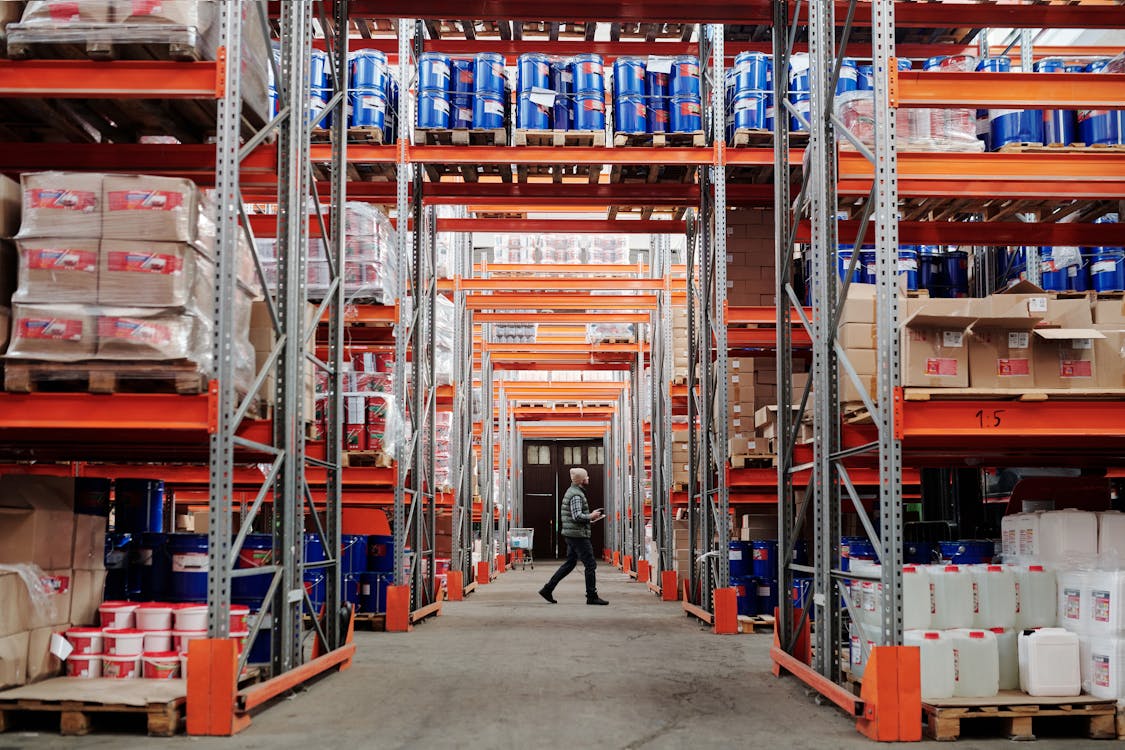
Create a Physical Space for Your Holiday Backorders
Designating a physical space for your holiday backorders is the first step to success.
Even if the area is empty throughout your peak season or back order high time, it’s nonnegotiable to have the available space for potential backorders at all times.
Keeping things organized using a designated backorder area will allow staff to quickly access items when they arrive at your inventory and immediately begin shipping out to long-awaiting customers.
TIP: Customers who are on backorder agree to a long wait, but you only have so long before they get impatient or find the same item at a store somewhere else. When inventory finally arrives make sure to get orders out as quickly as possible in order to retain buyers. Ecommerce companies usually use 3PLs because of this. If the order fulfillment process is taking too long, you should look for a better 3PL provider.
Prepare and Train Your Team
Make sure your staff is prepared to handle holiday backorders. When you use a backorder strategy for your business, you need to make sure that current or seasonal employees get in-depth training on how to handle backorder fulfillment.
You’re going to lose a lot of customers if your employees don’t know what they should be doing and when they should be doing it.
Things must be properly tracked, managed, and overseen by a specific team with backorders as their highest priority in order for a backorder option to be successful for your company.
Inventory Reorder Notifications
A sure-fire way to have a successful holiday backorders strategy is by never running out of inventory.
This usually isn’t possible, and with the rise of online shopping, it’s even less likely to hold a full stock. However, with re-order notifications you have a better chance of keeping things in stock and available to sell, avoiding the need for backorders and extended wait times altogether.
Re-order notifications can be set up between the manufacturer and inventory facility (whether private or with a 3PL). Once inventory reaches a certain amount, your systems will notify your manufacturer and set the delivery date for more products.
This will allow you to keep fulfilling without the setbacks of backorders and help your brand retain the reputation of being fast, reliable, and dependable for your customers.
Back in Stock Email Notifications
If holiday backorders are not something you’d like to use or continue using, there is one trick you can use.
One way to avoid backorders is to let items go “out of stock” on your website. A common way to let customers know when an item is back in stock is to give them the option to send them an email notification when it is available again.
Customers who get an email telling them that an item is back in stock are more likely to buy than people who just browse your site.
Not only does this capture their email but it gives you the chance to send discounts and recommendations based on their notification preferences.
Customer Service For Holiday Backorders
Most ecommerce brands know all too well that backorders mean more customer service tickets.
This is because once you begin offering backorder options you also open the door to additional wait times, complications, and customer concerns. Some tend to ask: “is it worth it?”
Depending on your potential profit for offering backorders on items or exclusive product launches, yes, it can be worth it. In addition to preparing your physical inventory, you must also prepare your customer service line.
Communication
When it comes to keeping your backorder customers satisfied during peak season, communication (and a lot of it) is essential.
Providing precise updates, clear information, and regular contact is one of the easiest ways to keep your customers happy (even if the wait time is greater than normal).
Your buyer will feel cared for and far more committed to their backorder purchase if you keep them in the loop and reassure them along the way. Like BMW’s old “watch your custom car be born” campaign.
TIP: Sending customers emails, text messages, videos, or even short letters will help keep them informed and committed to their buying journey with your brand.
Keep Staff Up to Date on Inventory
In the event that a client calls in to inquire about the status of an item on backorder, it’s usually better if your staff members are aware that the item has been delayed for an additional two days owing to manufacturing difficulties.
If you do not communicate new and updated information to your employees on a regular basis, you run the danger of supplying customers with incorrect information and losing them as a buyer.
Inventory is constantly fluctuating, make certain that your customer service team is kept up to speed on any new inventory information on a continuous basis.
Create a Backup Plan
It’s essential to have a backup plan in case of extended wait times, worried consumers, or cancellations.
If you want to remedy long wait times or simply keep your backorder customers happy, surprise them with personalized notes, samples, or even a free product. This will keep them patient and satisfied with your brand.
Offering personable items allows your customer to feel cared for and shows that they are not forgotten about. This will increase customer satisfaction, loyalty, and even motivate customers to make more purchases.
Be Nice and Have Patience
Every holiday season e-commerce businesses deal with a rise in frustrated customers and increased complaint tickets.
Adding holiday backorder options for buyers only aggravates this number and creates a bigger need for staff with de-escalation training. Because of this retaining a calm and welcoming demeanor will do more for your customer service team than you’d expect.
Most customers calling to resolve their problems are often upset. The majority of the time buyers need someone to genuinely listen to their concerns and guide them through the process of a solution.
Prepare your staff with appropriate training in order to handle potentially difficult customers.

Beginner’s Guide to Third-Party Logistics (3PL)
The world of e-commerce is always changing, therefore understanding the roll of Third-Party Logistics is integral to keeping up. In light of this our beginner’s guide to third-party logistics (3PL) will delve into the essential aspects, offering insights into fulfillment services, warehousing, and much more.
Read More…
Find the Solution or Rectify the Problem
Keep in mind that finding a solution is just as important as being patient and kind to customers. Although most people want someone to listen to their concerns, buyers are ultimately looking for their concerns to be rectified as soon as possible. This means that your customer service team should be trained not only to be empathetic but also to find a solution that customers will be happy with.
At the end of the day, offering holiday backorders options to your customer can be tricky. That’s why we’ve outlined everything we know to provide you with the necessary information you need to reach backorder success.
Let’s Talk!
The Cheapest Ways to Reduce E-commerce Emissions
Cheap Ways to Reduce E-commerce Emissions
The global movement toward sustainability requires greener solutions for e-commerce and online shopping. Today we’ll be covering the cheapest and easiest ways to reduce e-commerce emissions. Companies benefit from sustainability in a variety of ways, including improved reputation, climate change preparation, staying competitive, and appealing to consumer standards and expectations.
Cheapest Ways to Reduce E-commerce Emissions
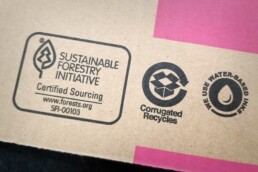
Use Greener and Carbon Neutral Delivery Options
BOPIS
Buy-online pick-up in-store options continue to be a popular choice for online shoppers. By allowing orders to be picked up at a real storefront, e-commerce companies help reduce vehicular emissions associated with individual orders.
Use Multiple Fulfillment Center Locations
Having multiple fulfillment locations allows purchases to reach customers quicker, regardless of geographic location. Furthermore, when your e-commerce platform utilizes multiple distribution centers, pick-up options become more convenient for customers.
Pick-up Points
Pick-up locations range from storefronts and public parcel lockers to collaborating partners like your local grocery store. These alternative options allow customers to choose locations that best meet their needs while also minimizing their dependence on commercial product delivery. Additionally, shoppers could pick up their package hours, if not days earlier when bypassing the delivery process.
Sustainable Carrier Programs
UPS and FedEx are now offering low-emission delivery vehicles, bicycle deliveries, and other carbon offsetting and GHG-reduction measures. By partnering with environmentally friendly carriers, you can develop an eco-friendly reputation for your e-commerce company while also lowering emissions.
Purchase Carbon Offsets
Carbon offsets present a viable strategy for mitigating greenhouse gas emissions stemming from automobiles or any other form of pollution. Achieving carbon neutrality entails estimating the annual CO2 emissions of your company and acquiring carbon offsets accordingly. These measures enable your company to diminish its carbon footprint without necessitating significant alterations to its operations or infrastructure.
Use this free calculator to estimate your company’s CO2 impact. Read the results to determine what carbon offsets to purchase.
Switch to Sustainable Packaging
Reduce Unnecessary Packaging
Proper packing is essential for minimizing package and material waste. By selecting the appropriate box size for specific products, you can avoid wasting space and the need for unnecessary package filler. With less space for movement, things are less likely to be damaged without the use of excess material.
Use Eco-friendly Materials
Investing in recyclable materials allows your e-commerce to have a positive environmental impact even after orders have been fulfilled. Customers can support the environment by discarding fewer packaging materials and following the recycling instructions your company provides.
Integrating reusable functions into your packaging saves waste while also providing your consumers with new opportunities to experience your brand.
Consider the following reusable packaging ideas:
- Packaging that can be re-purposed into product holders.
- Shipping boxes that can be re-purposed into a cardboard castle for cats.
- Packaging that can be re-purposed as hangers or for product organization.
Making your packaging biodegradable is another option. You won’t have to depend on your consumer to recycle or reuse whatever material does make it to them. When properly submitted to an industrial site, shoppers may dispose of packaging, and waste will decompose in less than 180 days.
Reduce Your Returns
When it comes to minimizing total returns, making your return policy visible and easy to read for consumers is vital. Before completing a purchase and blindly returning products, aid your consumers in locating, reading, and understanding your return policy. Include important details such as return shipping and restocking costs (if applicable), as well as the acceptable return conditions.
Moreover, promoting exchanges over returns can assist in lowering both overall return rates and carbon impact. Making exchanges a preferred option guides shoppers to a more environmentally responsible solution while still providing them the ability to choose.
Learn more tips and tricks about avoiding returns altogether.
Reduce E-Waste
As an e-commerce business, developing a comprehensive strategy to minimize your environmental footprint is imperative. A proactive approach involves responsibly recycling electronics, spanning from in-house tech equipment to industrial batteries. This can be achieved through collaboration with electronic recycling programs or active participation in initiatives like the Sustainable Materials Management (SMM) Electronics Challenge.
Opting to reduce your e-commerce emissions doesn’t necessarily entail high costs. E-commerce enterprises can effectively mitigate their environmental footprint without breaking the bank through strategies such as embracing alternative delivery options, adopting sustainable packaging practices, and minimizing the use of unnecessary materials and e-waste.
Beginner’s Guide to Third-Party Logistics (3PL)
The world of e-commerce is always changing, therefore understanding the roll of Third-Party Logistics is integral to keeping up. In light of this our beginner’s guide to third-party logistics (3PL) will delve into the essential aspects, offering insights into fulfillment services, warehousing, and much more.
Read More…
Reduce your carbon footprint, appeal to emerging eco-trends, and show the world how much you care about the environment by consistently providing a green experience with the help of Falcon Fulfillment.
Go Green with Falcon!
Let’s Talk!



